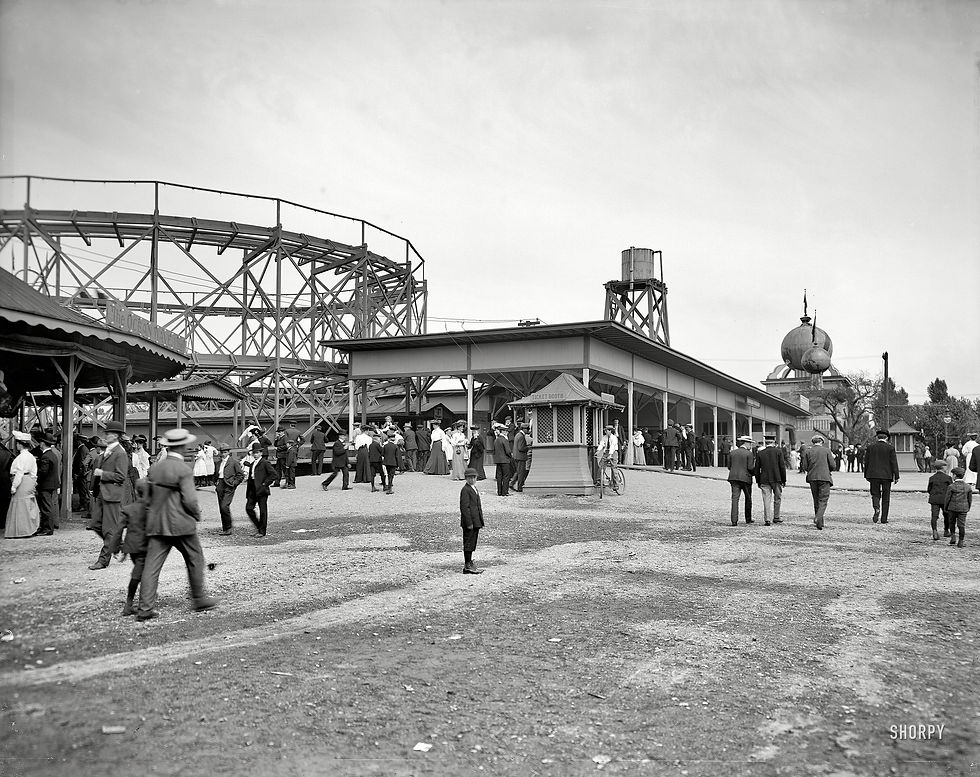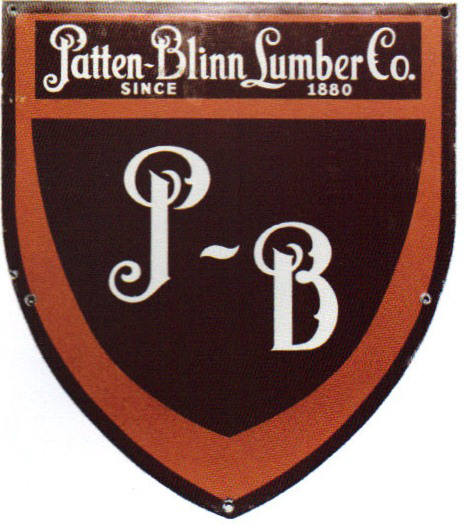An Eastern European in 1918 Cleveland
- Maura Jean
- Jan 24, 2018
- 6 min read
Updated: Jan 31, 2018
Two books that belonged to the same woman, living feet apart on a shelf

In a bookstore in Bend, while browsing through the oldest books on the shelf and looking for inscriptions, I came across two books that appeared to belong to the same woman.
Chicot the Jester by Alexandre Dumas was signed "Doris L. Merkle, '18, Oberlin, Ohio, 160 East College Street'.
The Return of the Native by Thomas Hardy was signed "Dorris Merkle Reinke, Christmas 1919'.
As I adore gleaning information from inscriptions, I was obviously thrilled to see that this woman had obviously gotten married sometime between 1918 and 1919. Sure enough, I found a marriage certificate:

On August 29, 1919, Doris Merkle married Henry Reinke. Both of them had been born in Ohio, and Doris had attended Oberlin College and graduated in the class of 1918. Perhaps she had been reading Alexandre Dumas' Chicot the Jester as part of her studies.

The above was published in the transcribed 1918 Oberlin Alumni newsletter. In 1841 the first three women ever to earn their B.A.s did so from Oberlin College. She lived on East College, in the same block as a house that is on the National Register of Historic Places. Farther down the street was the Apollo Theater, built in 1913 and one of the first cinemas in the country to show "talkies". At the time that she was living there, however, the talkies weren't being shown yet. That wouldn't come until 1928. She would have seen vaudeville acts and silent movies with an organ playing in the background. 1918's top grossing film was Mickey, the tale of an orphan girl brought up by miners in a mining settlement. Audiences were also introduced to Tarzan of the Apes for the first time ever in film that year. Perhaps Miss Merkle took in one of these films.

In 1918, Merkle was living here:

According to tax records, the house was built in 1900 as part of an early subdivision. It is a 7 bedroom, 7 bath, 21-room house. It was likely a boarding house for students. Interestingly, just 4 years after she lived there, a European Tours company was advertising in Oberlin College's The Outlook from the same address.

After graduating and beginning work as a draftswoman for the New York Central Railroad, Miss Doris Merkle married Mr. Henry E. Reinke on August 29, 1919. He was a bookkeeper and lived at 4004 Memphis Avenue, Cleveland. Perhaps she moved there and this house is where they celebrated Christmas in 1919 and Doris received Thomas Hardy's The Return of the Natives. This house was also built in 1900.

Here, the married couple would have been living just a few blocks from what was at the time a famous baseball stadium called Brookside Stadium. It was the site of three historic baseball games attended by over 100,000 people, an astounding number for the time. These were free events sponsored by local companies like Krug Brewing, and apparently drew people from all over the city, from all walks of life. It was also the site of concerts of large events. Henry and Doris almost certainly would have gone to an event there, or at least gone by the stadium frequently.

Here is Henry, or Harvey E., Reinke's draft registration in 1918. Harvey was of medium height and build, had blue eyes and dark brown hair. He was listed as working for K & W Ignition Co. which had recently been in the news:

Independence, where Merkle was born and where her family lived, was predominately Eastern European. There were a large number of Czech, Polish, and German immigrants living in that area. Reinke also has a distinctively German sound to it, so it's likely that these were the children of immigrants, or perhaps second generation.
It was an exciting time to be in Cleveland as well. Slow growing through the first half of the 1800's, but 1900 it was an important industrial center. In 1901, the formation of the American League led brought the Cleveland Blues to the city, renamed the Cleveland Indians in 1915. Cleveland's own version of Coney Island, Euclid Beach Park. Around the time Doris got ahold of these books, the Cleveland Museum of Art and the Cleveland Orchestra were founded.

Euclid Beach Park, 1910
While Euclid Beach Park stuck around until 1969, at the turn of century there was stiff competition for Coney Island-like attractions. Amusement parks were all the rage and Cleveland also boasted the Luna Park, White City, Forest City, and Puritas Spring Park.
However, it wouldn't have all been movies at the Apollo and jaunts to Euclid Beach Park. Cleveland, and the greater country at large, were in a bit of turmoil. Immigration was at an all time high and was becoming more and more restricted. By 1921, the first limits were set upon how many people of each nationality could enter the country. In 1924, the Border Patrol was established. Rising political tension also was causing widespread fear and violence across the United States.
Woodrow Wilson was president, who had established the League of Nations and essentially ended the United States isolationist policy. WWI had just ended, and socialism was spreading like wildfire. There was a belief, perhaps in reaction to the industrial revolution that increased the ranks of men in labor, that the working man was meant to rise up against the elite and this was happening all over the world.

Eugene V. Debs was a Socialist politician who was in the Indiana senate and ran for president no less than five times. He was arrested under the Sedition Act of 1918 and his federal trial was held in Cleveland. On May 1, 1919, Charles Ruthenberg organized a parade through Cleveland to protest his jailing. Socialists, communists, unionists and anarchists marched through the town with red flags and were soon met by Victory Liberty Loan workers on Superior Avenue, and violence broke out. Of those arrested, over a hundred, only eight were American born.
America is no stranger to fearing the other, and it might have been a scary time to be the child of an immigrant in the United States. This incident is part of what is known as the First Red Scare, a period of time in which similar instances of violence broke out across the country, although Cleveland's May Day Riot was the most violent.
I wonder if Doris Merkle or Henry Reinke ever experienced racism. Were they refused service in Cleveland? Spoken down to? Almost certainly, Henry Reinke's father Emil, who was German-born and spoke German as his first language, would have been experienced some kind of aggression. Most of all, I wonder if Henry Reinke took part in this demonstration. He was potentially a unionist as he had worked as a mechanic and laborer during turn of the century America. Even if he didn't take part, he would likely have encountered men in his line of work who were.
In 1920, Doris and Henry Reinke were listed in the census as living at Cleveland Ward 6 as roomers.

Henry's occupation is listed as office clerk for Auto Lock Company. It also lists that his father was German born and spoke German. His mother, Alvina, was born in Ohio but both of her parents were born in Germany.
By 1930, the two of them had two children: Harvey, 8, and Lois, 2. They were living in their own home, 222 Anderson Ave, and Doris was no longer working. Harvey was working as music teacher, and they owned a radio set. It appears that they were living the American Dream in earnest. This house no longer exists unfortunately.
By 1940, the couple had moved to Cincinnati where Mr. Reinke worked as the superintendent of a lithograph finisher. They soon moved to San Diego, and by 1945 were listed as living on Narragansett Ave, just a couple of blocks from the Pacific Ocean. Mr. Reinke was a salesman now for Patten-Blinn Lumber Company.

In 1954, Doris Reinke was still living in San Diego, but she was listed as a widow. Her husband died in November of 1951. It's fascinating that these two children of German immigrants met in Cleveland, Ohio and died in California. What is even more fascinating, however, are the empty spaces between the facts of their lives. We know when and where they married, the names of their children, the places they lived and worked. But what inspired them to move all the way across the country to 1950's California? What was their experience like during the Red Scare of the early 1900's? What was it like studying at Oberlin during the First World War?





Comments